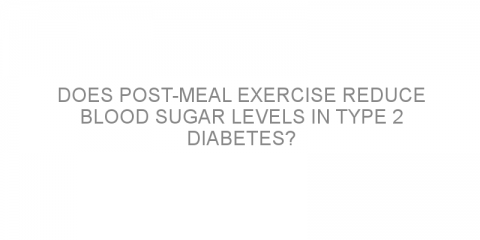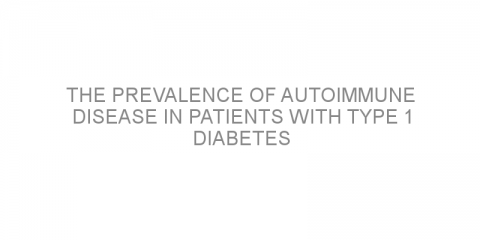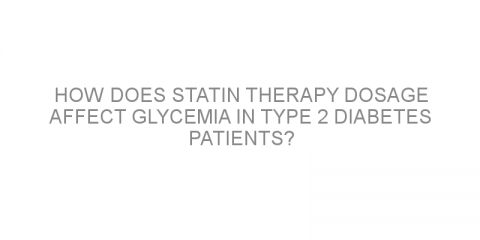In a nutshell The authors aimed to determine the benefits of adding or switching to insulin therapy in type 2 diabetes patients not responding to treatment with glucagon-like peptide-1 receptor agonists (GLP- 1RA). The authors concluded that the earlier addition of insulin was associated with better glycemic control. The authors suggest that patients...
Read MoreDiabetes mellitus Posts on Medivizor
Long-term pioglitazone in patients with NASH and prediabetes or type 2 diabetes
In a nutshell The authors aimed to determine the effectiveness and safety of long-term pioglitazone (Actos) treatment in patients with nonalcoholic steatohepatitis (NASH) and prediabetes or type 2 diabetes. The authors concluded that long-term pioglitazone treatment is safe and effective in patients with NASH and prediabetes or type 2...
Read MoreMaternal obesity and risk of pre-eclampsia in women with type 1 or type 2 diabetes
In a nutshell This study investigated the connections between maternal weight and pre-eclampsia in women with type 1 or type 2 diabetes. The study determined that maternal overweight and obesity increased the risk of pre-eclampsia in women with type 1 diabetes, but not in women with type 2 diabetes. Some background Pre-eclampsia is a...
Read MoreSingle-hormone compared to dual-hormone artificial pancreas during continuous and interval exercise
In a nutshell The authors aimed to determine whether the dual-hormone artificial pancreas reduces hypoglycemia (dangerously low blood glucose) when compared to insulin alone during exercise. The authors concluded that the dual-hormone artificial pancreas out-performed insulin alone when controlling glucose levels during exercise in adults with type 1...
Read MoreDoes post-meal exercise reduce blood sugar levels in type 2 diabetes?
In a nutshell The authors aimed to determine whether prescribed walking taken after meals was more effective in patients with type 2 diabetes compared to walking on a single occasion at any time of the day. The authors concluded that physical activity programs should be specifically designed for post-meal activity, particularly when meals are...
Read MoreThe prevalence of autoimmune disease in patients with type 1 diabetes
In a nutshell The authors aimed to determine the prevalence and associated predictive factors for autoimmune diseases in children and adults with type 1 diabetes. The authors concluded that the diagnosis of one or more autoimmune disease was common in type 1 diabetes, particularly in women, non-Hispanic whites and the elderly. Some background...
Read MoreFracture risk and brittle bones in type 2 diabetes
In a nutshell The authors aimed to analyze data available on type 2 diabetes and osteoporosis (condition that causes bone fragility) and determine the best treatment course to avoid osteoporosis development. The authors concluded that type 2 diabetes moderately increases the risk of fracture, and that new treatments that have a neutral or positive...
Read MoreGlucagon-like peptide 1 use in patients with type 1 diabetes
In a nutshell The authors aimed to review the use of glucagon-like peptide 1 (GLP-1) agonists in patients with type 1 diabetes. The authors concluded that the use of GLP-1 agonists should be considered in patients with type 1 diabetes who are overweight or obese and not at target blood sugar control. Tolerability in patients, however, was a potential...
Read MoreReplacing diet beverages with water in obese women with type 2 diabetes
In a nutshell The authors aimed to determine the effects of replacing diet beverages with water in obese women with type 2 diabetes following a hypo-energetic diet. The authors concluded that replacing diet drinks with water after the main meal in obese adult women with type 2 diabetes might increase weight loss during a weight loss...
Read MoreHow does statin therapy dosage affect glycemia in type 2 diabetes patients?
In a nutshell The authors aimed to determine the relationship between statin therapy and glycemia in patients with type 2 diabetes. The authors concluded that there was a dose-response relationship between statin treatment intensity and glycemia. Some background Statin therapy involves a class of drugs that help to lower cholesterol levels in the...
Read MoreAdd some anchovies to the pizza: omega-3 fatty acids associated with reduced risk of diabetic vision loss
In a nutshell The authors aimed to determine whether an intake of omega-3 fatty acids decreased the incidence of sight-threatening diabetic retinopathy in patients with type 2 diabetes over the age of 55 years. The authors concluded that an omega-3 fatty acid intake of over 500 mg/d was associated with a decreased risk of sight-threatening...
Read MoreAge-related macular degeneration in diabetes
In a nutshell The authors aimed to evaluate the relationship between age-related macular degeneration and diabetes. The authors concluded that diabetes was a risk factor for age-related macular degeneration (AMD) and the association was stronger in late AMD than earlier stages. Some background AMD is a disease that causes the gradual loss of...
Read More













